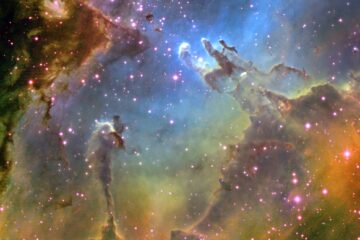Now we come to the penultimate planet in our solar system, the lovely Uranus!
- That’s Not My Name!

Uranus was discovered in March 1781 by astronomer William Herschel. He was observing the stars in the night sky using a telescope that he had built himself when he made the new discovery. Uranus was the first planet found using the aid of a telescope, however, Herschel initially thought that his find was a comet! Later accepted as a new planetary discovery. At the time Herschel proposed its new name as ‘Georgian Sidus’ after King George III, but unsurprising this did not go down too well with the scientific community. Instead the new planet was declared Uranus after the Greek God of the sky Ouranos, and is the only planet to be named after a Greek god rather than a Roman God. Perhaps they could of came up with a better, less giggle provoking name (but that’s just my opinion). So here’s a helpful tip, use the alternative pronunciation that most scientist use – YUR-IN-US.
Fun fact: William Herschel is the great grandfather of Joseph Hardcastle, who was appointed Director of the Armagh Observatory, however he sadly passed away in 1917 before he ever made it to Armagh.
- Baby, It’s Cold Outside…

As the seventh planet from the sun it’s safe to say Uranus is going to be cold, but how cold? Well did you know that Uranus and Neptune are sometimes referred to as the ice giants? This is because, unlike Saturn and Jupiter, their atmosphere is made up mostly of ice rather than gas. Uranus actually has the coldest atmosphere out of all the planets with a minimum atmospheric temperature of -224 degrees Celsius – despite the fact is isn’t not the most distant. Neptune however is still the coldest planets on average. Uranus is mostly comprised of helium, hydrogen and methane, with a small rocky core. The methane in the atmosphere results in Uranus’ pale blue complexion.
- Rolling, rolling, rolling…

Uranus has the very unique characteristic of its axis of rotation being tilted! Uranus is basically rolling on its side. The best analogy is to think of the planets as spinning tops orbiting around the sun, whereas Uranus is more like a ball rolling around the sun. The poles of Uranus are located on the area of the equator on Earth. Earth’s axis tilt is approximately 23.5 degrees compared to Uranus’ 98 degree tilt. The leading theory for Uranus’ distorted axis of rotation is that a large Earth sized object collided with Uranus billions of years ago, thereby causing it to drastically shift. One day on Uranus is 17 hours, this is the time it takes to complete once rotation on its axis, this is not to drastically different to Earth’s 24 hour day. Interestingly, Uranus also orbits the sun in a clockwise direction rather than counter clockwise like the majority of the other planets in our Solar System. This is also known as retrograde rotation; the only other planet that does this motion is Venus.
- If You Liked It, Then You Should Have Put a Ring On It

Saturn isn’t the only planet to have formed rings around it, and although not as spectacular or well known, Uranus too has rings. The rings are in fact very dim and were not discovered until 1977 when they appeared up in thermal images. It is now known that Uranus has 13 rings that are extremely thin at only a few kilometres thick. They are predominantly made up of small chunks rock rather than dust and chunks of ice, like the rings of Saturn. It is believed that the rings are much younger than the planet at approximately 600 million years old and are the remnants of destroyed moons that were broken up after collisions.
- Moons For Miles

Like all great gas giant planets, Uranus too has amassed an extensive collection of satellites. Although not as impressive as Saturn’s 82 moons, Uranus has a respectable 27 orbiting the pale blue ball of gas, all of which have been named after works of Shakespeare and Alexander Pope. Not only did William Hershel discover the planet but six years later found the first satellites of Uranus and they were named Titania and Oberon. Another astronomer called William Lassell discovered the next two, Ariel and Umbriel and nearly an century passed before another moon was discovered. Miranda was discovered in 1948 and named after Miranda from Shakespeare’s The Tempest. Miranda is probably one of the most fascinating moons in the Solar System due to its unique landscape, as it is covered in strange and hard to explain patterns such as cliffs 20km high and giant canyons.
So there we have it, five fun facts about Uranus. Who knew it was such an interesting and unique planet? You are all now experts that can go out into the world (well maybe not world, we are in lockdown after all, maybe the living room?) and spread your knowledge! I hope you enjoyed reading this as much as I did writing it.



0 Comments